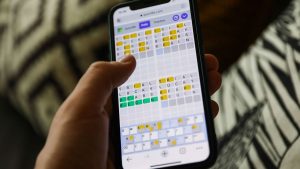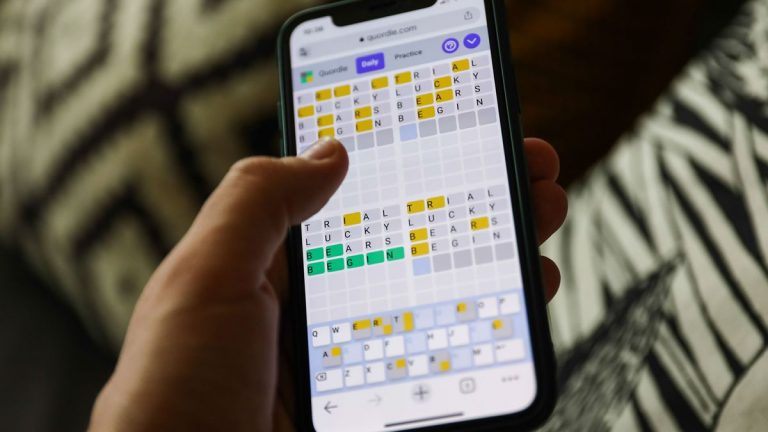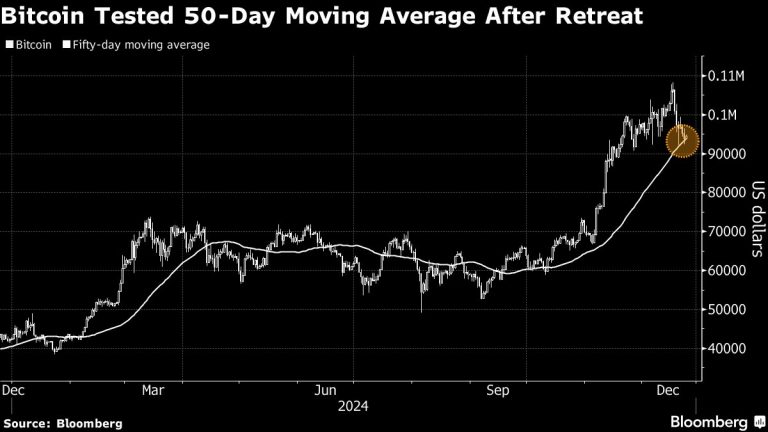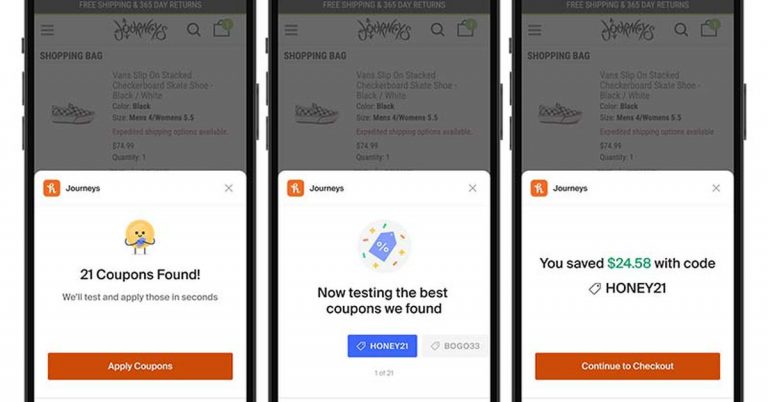
The crypto market is buzzing with major developments. Bitcoin ETFs have achieved a groundbreaking $50 billion milestone, marking significant institutional interest. XRP has surged over 12% as Ripple prepares to launch its much-anticipated RLUSD stablecoin. Meanwhile, Yeti Ouro (YETIO), a new and viral altcoin, is making waves in its presale, with prices jumping over 40%. With so much action.
Bitcoin ETFs: Bullish Institutional Intents Drive BTC Higher
As institutional investors pull in both around ETFs, Bitcoin price surges in its bull run. U.S.-based Spot Bitcoin ETFs have gathered more than 500,000 BTC since inception. Now, the total value of this giant inflow is $50.5 billion. It shows increasing trust from large finance and a movement toward Bitcoin as a hedge against traditional markets.
1-month Bitcoin price chart- source: CoinMarketCap
As if this wasn’t enough, MicroStrategy recently revealed the purchase of 21,550 BTC. With this acquisition, its overall holdings now exceed 423,650 BTC, solidifying its place as one of the largest corporate Bitcoin investors. The average purchase price of $98,782 per BTC indicates confidence in BTC price in the long run. Analysts say the price of bitcoin could test new highs in 2025, while others predict it if hit $150K or more as soon as next year.
Such levels of institutional adoption imply a new paradigm for Bitcoin. Increasing numbers of investors, both large and small, also seek to cash in on the rally.
XRP Climbing In Anticipation Of The Launch Of RLUSD
XRP has piqued the interest of investors with its price breaking out over 12% on the week. Ripple’s RLUSD stablecoin launched by CEO, Brad Garlinghouse, and the token also soars. On December 17, RLUSD will be launched on major exchanges including Bitstamp, Uphold and MoonPay.
1-month XRP price chart- source: CoinMarketCap
According to Ripple Labs, RLUSD is a disruptive player in the stablecoin sector. The goal is to compete against dominant players such as USDT and USDC with enterprise-grade solutions. The stablecoin is purportedly going to support XRP and add to its utilizations for cross-line exchanges. This news could likely drive the XRP price to the $2 mark by early 2025.
But RLUSD still has many problems to face. There is a lot of competition in the stablecoin space, and user adoption is far from guaranteed. Nevertheless, the well-established performance of Ripple along with its advancements in adjusting to regulations form a substantial basis for upcoming success.
Yeti Ouro (YETIO): The Presale That Is Making Waves
As Bitcoin and XRP steal the news, Yeti Ouro silently gains investors’ attention. YETIO is an innovative and utility-based memecoin with an ecosystem designed for gaming, staking and real-world use cases. Its presale has already spiked more than 40%, leading some to draw comparisons with early successes like Dogecoin and Shiba Inu.
Yeti Ouro’s presale has seen a rapid increase in investor activity. The token price started at $0.012 and has now climbed to $0.017 in Stage 2. Early investors are already enjoying strong gains, with the project raising over $1.25 million. Analysts predict YETIO could deliver 100X returns as it enters the broader market.
Yeti Ouro has launched a meme contest with a prize pool of $2000 for 1st place , $1000 for second place and $500 for third place. To participate, create engaging Yeti-themed memes, and share on X. Make sure to tag @yetiouro and use hashtag #YetiMeme. To learn more head over to the official Yeti Ouro X channel.
What makes Yeti Ouro different is the ecosystem it provides. It is associated with Yeti Go, a Unreal Engine-built Play-to-Earn (P2E) racing game. Players can also earn YETIO tokens, stake them for rewards, and trade in-game assets on an open marketplace. Additionally, the token burn mechanism and staking rewards also guarantee there will always be continual demand for YETIO.
Why Yeti Ouro Stands Out
While Bitcoin and XRP remain strong contenders, Yeti Ouro’s unique ecosystem is creating excitement. It blends the appeal of memecoins with real utility. This combination is rare and could lead to explosive growth. Here’s why investors are paying attention:
-
Presale Success: Over 3.2 million tokens sold in Stage 2.
-
Gaming Integration: Tied to the fun and chaotic Yeti Go racing game.
-
Staking Rewards: Holders earn passive income through token staking.
-
Strong Community: A growing base of early supporters and gamers.
With Bitcoin ETFs and XRP making headlines, Yeti Ouro is emerging as the underdog that could outperform expectations.
Conclusion
The crypto market is bullish in all aspects. Bitcoin ETF milestone demonstrates increasing trust from institutions, and XRP’s re-establishing of the bullish trend prepares the ground for Ripple’s upcoming RLUSD stablecoin. On the other hand, Yeti Ouro is blazing its way through with a successful presale and an innovative ecosystem. Having gained over 40% in Stage 2 alone, YETIO could be the next big name in crypto.
Yeti Ouro is attracting investors seeking the next 100x opportunity. And a unique and promising contender it is, balancing utility, gaming, and community. So, whether you are a BTC holder or an XRP enthusiast, following Yeti Ouro could make sense for 2025.
Join the Yeti Ouro Community
Website: https://yetiouro.io/
X (Formerly Twitter): https://x.com/yetiouro
Telegram: https://t.me/yetiouroofficial
Discord: https://discord.gg/YtUsEZ2ZrV
Disclaimer: This is a sponsored article and is for informational purposes only. It does not reflect the views of Crypto Daily, nor is it intended to be used as legal, tax, investment, or financial advice.

























+ There are no comments
Add yours